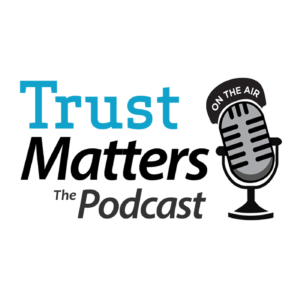Dear Charles H.,
If you’re like most companies today, you spend tons of time and effort tracking all the sales tax rates, rules and processes required for compliance everywhere you do business. But are you 100% confident in the result? Are you confident you’re audit proof?
We’re called XYZ. Our cloud-based solution not only eliminates all of those unproductive hours, but it solves all the sales and use tax compliance guesswork for good. In fact, we guarantee the accuracy of every rate you use, rendering you audit-proof in the process.
Charles H., if you’re willing to give us just 15 minutes on the phone, we can show you how we automate all the sales tax rates, rules, and processes required for compliance. We even address consumer use and seller use tax, too.
Sample C:
Good Day how are they getting on? It’s Irina! I’m from Russia.
I’am very ripe person and for now looking dependable Man) If You want to date me;) response me;)
I can send You my photo attached have a good time
What do you think?
Here’s my grading of them.
They’re all about the same. I would grade them F, F and D respectively (yes, sample C is fractionally better – I’ll explain).
Worse yet – not only is that kind of effort by far the dominant quality of email marketing I see today – it is not all that much different from the supposedly sophisticated B2B sales and marketing initiatives we see major firms putting forth. Stupid marketing (and sales), I suggest, have become endemic.
This is part 1 of a 3-part blogpost series I’m calling “Enabling Stupid Marketing (and sales) at the Speed of Light.”
- In this first part, I want to describe the problem – to point out how widespread it has become, to define the problem, to describe just what kind of “stupid” we’re talking about.
- In part 2, I’ll talk about why this problem has become so endemic.
- In part 3, I’ll talk about the two generic solutions to the problem.
Speed of Light Stupid Marketing (and sales): How to Spot It
There have, of course, been amazing advances in recent years in the fields of sales and marketing. CRM and Salesforce have upended sales processes. Technology has enabled almost frighteningly good tools for identifying and targeting customer behavior. And amazing software tools are helping automate and micro-tune all kinds of sales and marketing functions.
But the sales and marketing folk of today – very much driven by the increased role of technology – have confused process with substance, features with benefits, and even sales with marketing.
The core, basic, Stupidity-101 mistake of our time is the same mistake that was made back in the Stone Age of business, when I came of age – a stultifying obsession with one’s own product features, to the exclusion of any meaningful focus on customer needs.
Let’s look first at how my three examples stack up:
- What does ABC from Sample A have to tell me? That they’re the leaders in business cards. 100% features. Zero benefits. And don’t even look for a hint of connection with me. Do I care? Not one bit.
- What does XYZ from Sample B tell me? That I’m indistinguishable from half the companies out there (it’s not easy to insult your customer in the first sentence), spending “tons of time” tracking sales tax rates. Not true for me (and I doubt for others); they want more time from me on the phone than I’ve spent in the last 5 years thinking about it. So now not only do I not care, but I peg the writer for a liar and/or a fool.
- Irina, in Sample C, asks if I want to date her and have a good time. To her credit, at least she leaves something to my imagination, which offers a chance of escaping the no-man’s land of ‘features and price’ that traps the other two.
This is 101 stuff. These days you can’t just put out a sign saying, “Stuff for sale here; and it’s really good stuff – let me tell you all about it.” You never could get away with just that, truth be told. Yet that’s what the majority of sales and marketing these days boils down to.
As a client/customer, I don’t care if it’s the latest AI-based PE Round Two-financed new app from Israel/Hyderabad/Silicon Valley that does blood tests while pre-emptively snuffing out Russian hackers and getting me Uber-delivered lunch. The only thing I care about is – what problem does this solve for me? Reciting your product’s nifty features does not, repeat not, constitute effective sales, or even marketing.
Drills vs. Holes. The still-sentient among us with long memories will recall Ted Levitt’s old bit about “people don’t buy drills, they buy holes.” They also don’t buy business cards, they buy impressions. They don’t buy tax compliance software, they buy peace of mind. And they don’t buy Russian girls, they buy – well, to Irina’s credit, she at least engages her customers’ imagination to fill in the blank.
Listing features is simply describing the drill, not the hole.
As my friend @davidabrock points out, this obsession with description is a failing especially noteworthy in the tech industry. This leads to some delicious irony; I’m sure I’m not the only one who gets emails from tech companies telling me about their ability to increase my sales and bottom line via their powerful software, which enables micro-targeting, lead generation, personalization, and the like. Meanwhile, it is clearly aimed at businesses not like mine, clearly the product of a mass emailing, shows no evidence of having micro-defined me in any terms, and clearly impersonal.
If their own dog food is so great, how come they’re not eating it themselves?
The Collateral Damage of Drill-bit Marketing. If you think of your brilliant product as the scarce resource, then you probably think of the customer as the commodity part of the supply/demand equation. The focus becomes on how good we can get at describing ourselves to as many people as possible.
This is of course dead wrong. Properly thought of, the scarce resource is customers, and the commodity is what we’re selling. The right focus is to jointly define a problem, and then help solve it for the customer.
I remember a college acquaintance who claimed to use this approach with women: “Just ask enough of them to have sex, someone is bound to say ‘yes.'” Maybe, maybe not. More important is the impression you leave on all those you interact with. A well known CRM vendor with a 3-syllable name used to be renowned for such scorched-earth sales approaches.
If you believe your job is to pitch as many leads as possible about your features, you devalue the customer. Conversely, if you believe your job is to understand a few customers as deeply as possible, your product features will take on new levels of meaning. But you have to view sales and marketing as about customers, not about your product.
Metaphors – Jobs and Dates. Here’s a metaphor. Imagine you’re looking for a job. You list your resume on all the job sites, email it in to employers, etc. You get an invitation to interview. You go in for the interview. Now – what do you do?
If your response to any question is to cite your resume, you lose the job. Because your features – the resume, in this case – are what got you the interview. What got you the interview won’t get you the offer. At that stage in the ‘sale’ (the sale of you), you need to go beyond features, and make a connection.
Another metaphor: you go out on a first date. Your date says, “So, tell me about yourself.” If your response goes on for more than a couple of minutes, you’ll not get a second date. Your features are what got you in the door – they won’t get you to the other side.
Doing email marketing based solely on features is like getting a job solely on resumes. Doing B2B marketing based solely on putting features in front of people is like dating based solely on picking the right app.
And It’s Not Just Email Marketing. I’ve used email marketing examples, but I see the same tendency in sophisticated B2B clients – and not just tech clients, either. There is so much complexity out there that sellers in complex B2B businesses don’t know how to achieve escape velocity from the black hole of features. They make the same mistake their B2C email marketing brethren do – they fall back on describing features.
And don’t tell me “solutions” are different. What passes for “solutions,” all too often, are just slightly altered versions of descriptions. The “problems” they are set up to solve are simply descriptions of one level up the business process or IT chain. They are still far from what classic marketers would call ‘needs,’ and miles away from ‘wants.’
In some ways, the problem is not that new. For 40 years now I’ve heard clients tell me that, “You have to talk technically with them, they really want to know features, you don’t know my client, they’re content freaks.” After 40 years, I suspect a pattern. And the pattern is not about the customer, it’s about the seller.
We are in love with our products, our features, our hard-fought expertise. And if we’re in love with it, how could our customers not be? Besides, that customer focus stuff feels un-scientific, soft, and – above all – risky. Far safer to stay in the safe world of features and price, features and price, features and price. New bottles – old wine.
Next Blogpost: Part 2 of 3 – Why Has Stupid Marketing (and Sales) at the Speed of Light Become Endemic?


